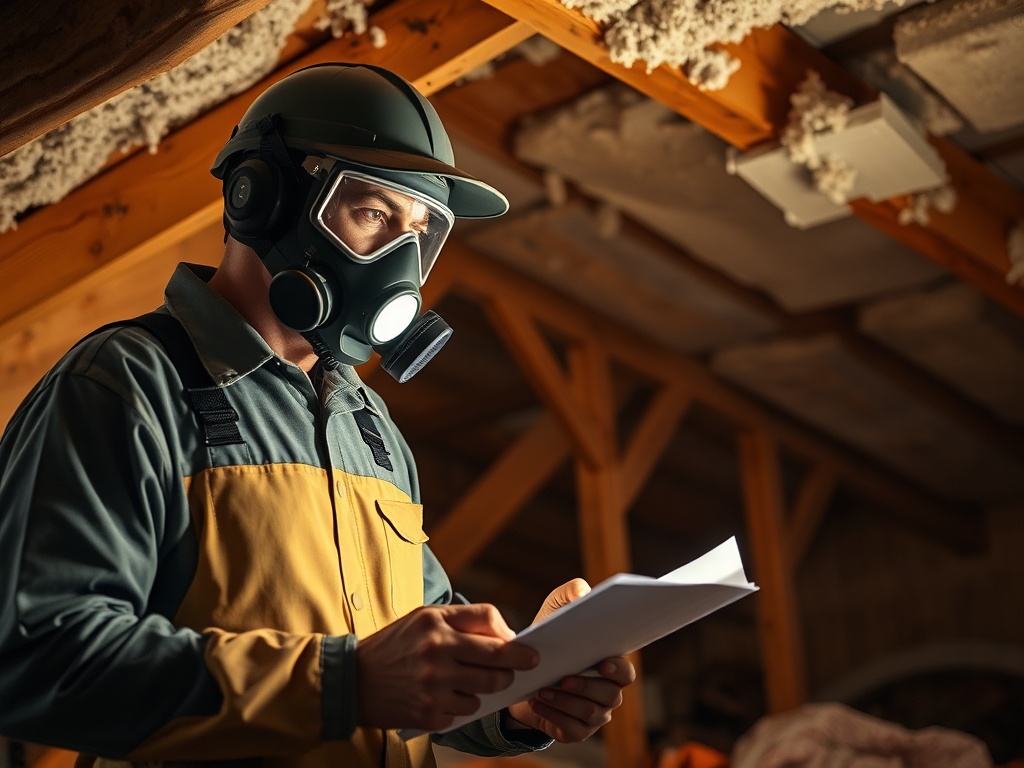Asbestos presence in buildings remains a hidden threat that demands thorough inspections to ensure safety. Detecting and managing asbestos risks through targeted surveys protect occupants and maintain regulatory compliance. Understanding different inspection types and their role in preventing contamination helps property owners make informed decisions, safeguarding both health and property value without unexpected hazards.
Types of Essential Asbestos Inspections for Property Safety
When it comes to asbestos inspection types, understanding the specific methods is crucial for effective property safety assessments. The primary goal of any asbestos survey is to identify the existence and condition of asbestos-containing materials (ACMs) to manage or remove them safely.
Also to see : What Are the Best Practices for Implementing a Digital Transformation Strategy in a UK Logistics Company?
One of the most common approaches is the standard asbestos survey. This type targets both residential and commercial properties and involves a thorough inspection to locate all ACMs. It is typically intrusive and non-intrusive, allowing inspectors to access all areas of a building to collect samples. The survey provides detailed results, including the location, extent, and condition of asbestos materials, which is essential for planning risk management or removal.
Another critical type is the pre-purchase and pre-renovation asbestos inspections. These surveys are essential before buying a property or carrying out renovations, as they help avoid unexpected exposure to asbestos. In a pre-purchase context, an asbestos survey ensures the property is free from hazardous materials or clarifies what remediation work is necessary. For renovations, the survey informs contractors about potential asbestos risks, helping them prepare safe work procedures.
Also read : Transform your energy bill with solar panels in yorkshire
Lastly, ongoing re-inspection and management surveys focus on ensuring compliance with safety regulations over time. Properties already known to have asbestos require periodic reassessment to monitor the condition of ACMs and to update management plans accordingly. These management surveys are vital for reducing long-term exposure risks and maintaining safe environments in both residential and commercial settings.
For comprehensive guidance and specific protocols associated with each inspection type, consulting resources like Detailed and Comprehensive Asbestos Surveys can be invaluable. They provide extensive information to support effective property safety assessments and informed decision-making.
Importance of Asbestos Inspections in Safeguarding Property
Proper asbestos risk management is essential for maintaining property safety and preventing serious health hazards. Exposure to asbestos fibers can lead to severe illnesses, including lung diseases and cancers. These health risks associated with asbestos exposure make inspections a critical step in identifying and managing potential dangers before they escalate.
Regular asbestos inspections play a vital role in asbestos hazard prevention by detecting damaged or deteriorating materials that may release harmful fibers. Early identification allows for timely intervention, reducing the risk of contamination to occupants and mitigating costly remediation efforts later.
Moreover, thorough inspections are key to complying with regulatory standards and insurance requirements for property holders. Adhering to these guidelines ensures legal protection and contributes to safer building environments overall.
Legal Requirements and Guidance for Asbestos Inspections
Understanding asbestos regulations is crucial for ensuring legal compliance when managing properties. Both national and local authorities mandate specific inspection requirements to identify and manage asbestos-containing materials safely. These laws are designed to protect occupants, workers, and the environment from asbestos exposure risks.
Typically, asbestos inspections are legally required during significant property events such as sales, renovations, or demolitions. The law often obliges property owners to commission professional asbestos surveys before commencing these activities. This ensures that any asbestos is properly identified and managed, preventing hazardous exposure and contamination.
Failing to adhere to property law regarding asbestos inspections can lead to substantial consequences. Non-compliance can result in severe fines, legal actions, and potential liabilities if asbestos-related health issues arise. It is not just a matter of safety but a strict legal obligation to conduct proper testing and documentation.
For those needing precise guidance, a Detailed and Comprehensive Asbestos Surveys resource provides expert instructions aligned with current regulations. This service supports property owners in fulfilling inspection requirements accurately and thoroughly, aiding complete legal compliance.
Inspection Process and Methodologies
Asbestos testing procedures are critical for ensuring accurate identification and risk assessment of asbestos-containing materials in buildings. The inspection process begins with a thorough visual survey to locate potential asbestos sources. Inspectors follow established assessment protocols that outline systematic steps to ensure comprehensive coverage of the property. These steps typically include initial site evaluation, targeted sampling, laboratory analysis, and detailed reporting.
Effective inspection techniques rely heavily on the proper use of tools and sampling methods. Inspectors use specialized equipment such as fiber-optic scopes, moisture meters, and personal protective equipment to safely collect samples. Sampling methods may involve bulk sampling of suspected materials, where small portions are carefully extracted, sealed, and labeled for laboratory examination to confirm the presence and type of asbestos fibers.
Once samples are analyzed, the results are compiled into a report that adheres to standard asbestos testing procedures. The report interprets findings based on fiber concentration, material condition, and exposure risk, providing clients clear guidance on necessary remediation or management actions. Understanding these assessment protocols and the rationale behind each step empowers building managers and occupants to make informed decisions about asbestos safety.
Choosing Certified Asbestos Inspection Professionals
When selecting certified asbestos inspectors, understanding their professional qualifications is crucial. Look for inspectors who hold recognized certifications from reputable organizations. These certifications validate that the inspector has undergone rigorous training and demonstrated competency in identifying asbestos-containing materials accurately. A hallmark of reliable service is accreditation—inspectors belonging to certified agencies committed to adhering to industry standards.
Using accredited services ensures compliance with safety regulations and enhances the credibility of inspection results. Accredited inspectors typically carry appropriate insurance, protecting property owners in case of accidental damage or exposure during the inspection process. This insurance coverage is a vital safeguard and reflects professionalism.
Before hiring an asbestos inspection professional, it’s essential to ask targeted questions to confirm their suitability. Key inquiries include:
- What certifications and accreditations do you hold?
- Are you insured and bonded for asbestos inspections?
- Can you provide references or previous case studies?
- Do you follow the latest protocols for asbestos detection?
Such questions help distinguish qualified inspectors from unverified providers, lowering risks in asbestos management. For buildings requiring thorough evaluation, consider requesting Detailed and Comprehensive Asbestos Surveys, which are conducted exclusively by accredited experts. This approach guarantees precise assessments and safer building management.
Evaluating Health Risks and Planning Remediation
When dealing with asbestos health risks, the first step is to accurately identify all asbestos-containing materials within the building. Understanding which materials harbor asbestos informs the scope of potential exposure and guides a precise risk assessment. This evaluation considers factors such as the condition of the asbestos, its location, and the likelihood of fiber release during normal use or disturbance.
A thorough risk assessment addresses critical questions: How friable is the asbestos? Is it in a high-traffic area? Does the building use practices that might routinely disturb the material? Using the Stanford Question Answering Dataset (SQuAD) method helps ensure concise, targeted answers such as specifying exactly which materials pose the greatest danger and whether immediate action is warranted.
Following the identification of hazardous materials, the urgency of asbestos removal planning is determined. If asbestos fibers are likely to become airborne, prompt remediation is essential to minimize health risks such as asbestosis, mesothelioma, and lung cancer. The risk assessment also distinguishes between accredited removal methods and potential containment strategies that may suffice in less severe cases.
Coordinating next steps after inspection results involves collaborating closely with certified asbestos professionals and contractors. Detailed and Comprehensive Asbestos Surveys are crucial to this process, providing a foundation for safe building management and tailored remediation plans. These surveys contribute reliable data, allowing decision-makers to strategize removal or encapsulation efficiently while complying with safety regulations.
In summary, evaluating health risks and planning remediation requires meticulous identification, thorough assessment, and strategic decision-making to safeguard occupants’ health and ensure regulatory compliance.
Practical Tips for Property Owners and Managers
Ensuring asbestos safety begins well before the inspection. Property owner guidance emphasizes thorough preparation before inspection teams arrive. Clear access to all areas, especially those suspected to contain asbestos, enables accurate assessment. It is crucial to inform inspectors about any previous asbestos management or removal activities to support their evaluation.
Maintaining comprehensive and organized records is fundamental for regulatory compliance. Detailed logs of past inspections, asbestos surveys, and any remediation work should be readily available. These documents not only demonstrate adherence to legal requirements but also serve as a valuable resource for future inspections and any necessary actions.
Ongoing monitoring and routine re-inspections play a pivotal role in managing asbestos risks effectively. Property owners should schedule regular checks based on the condition and location of asbestos-containing materials. This proactive approach helps detect any deterioration early and prevents exposure risks.










